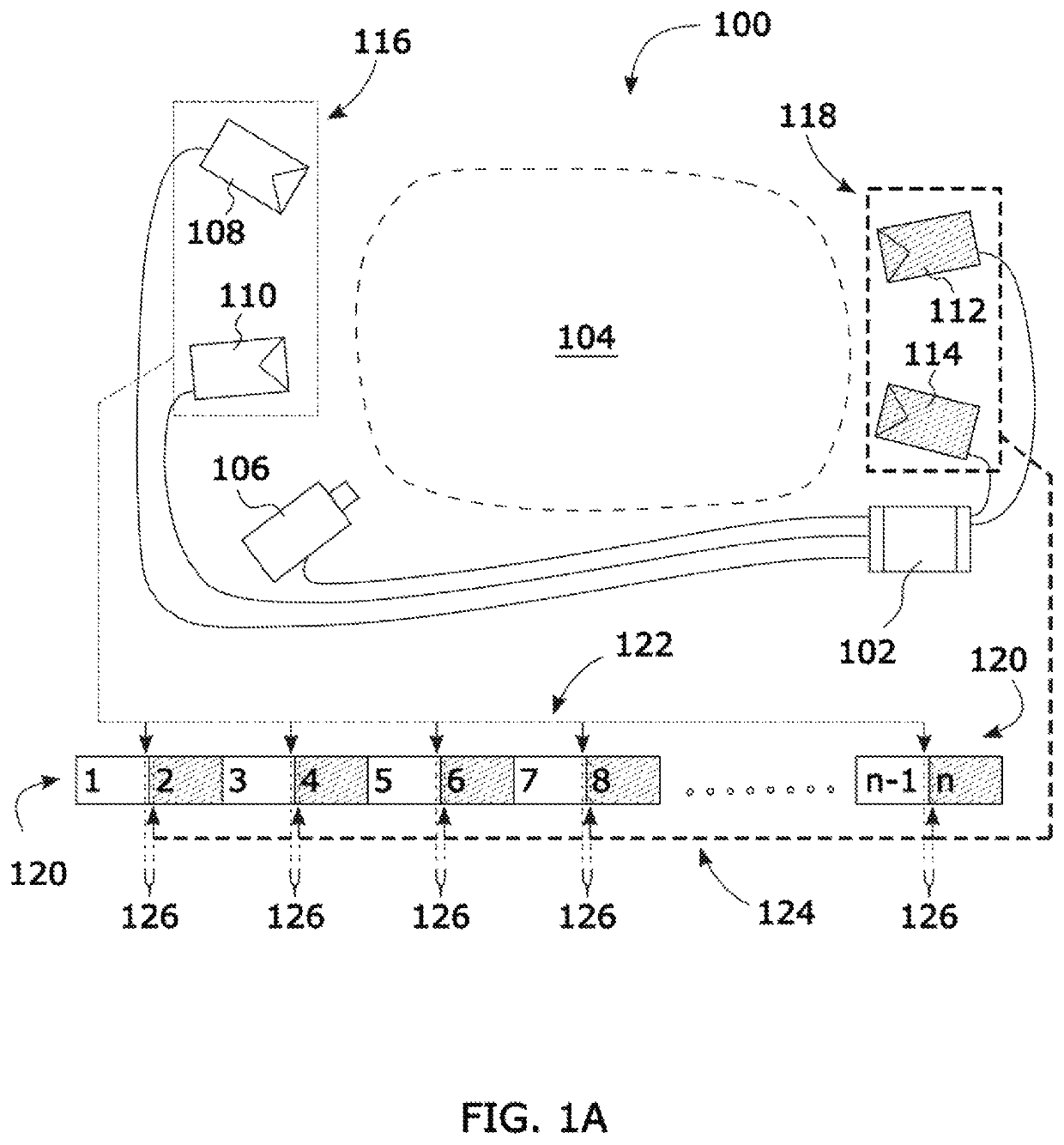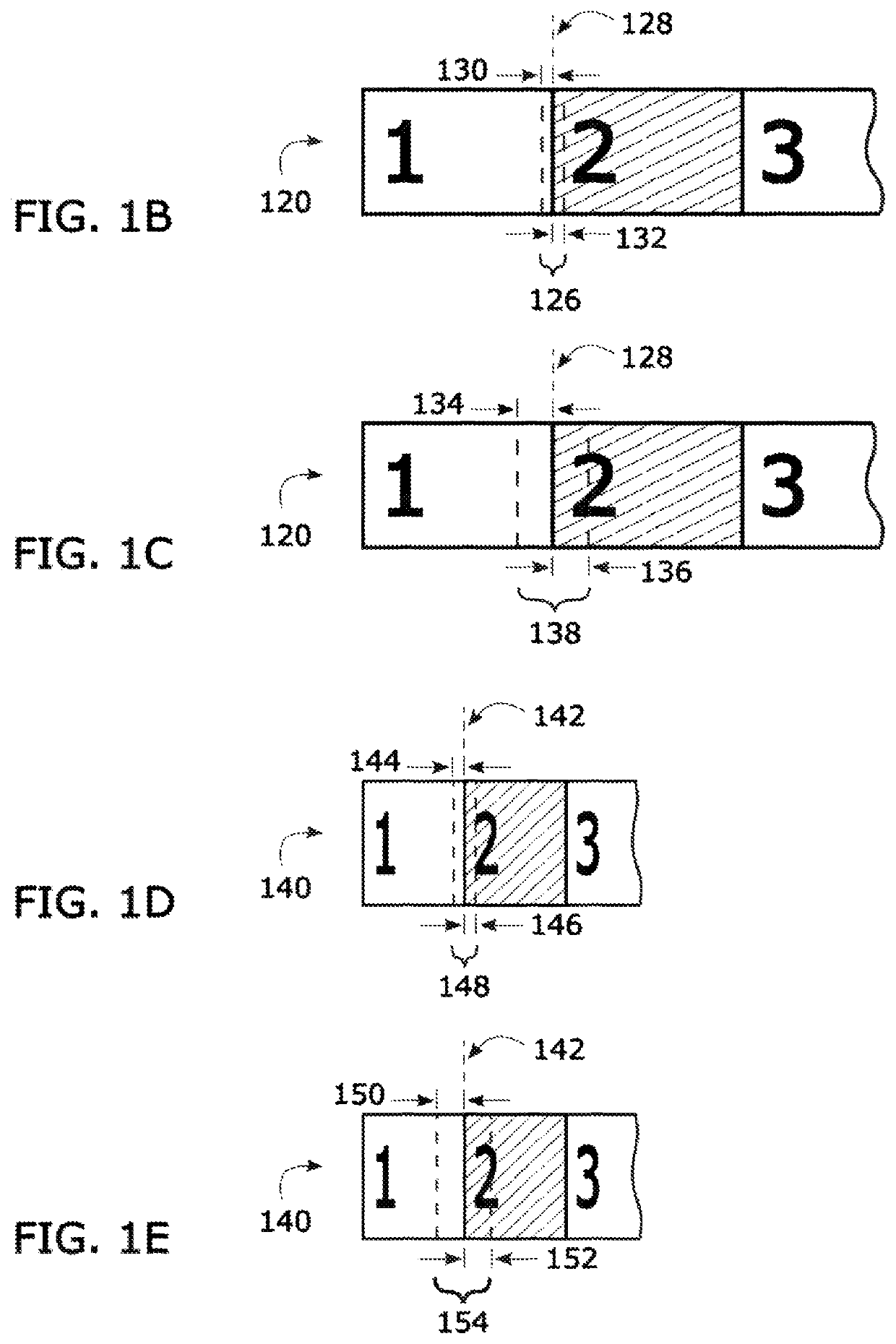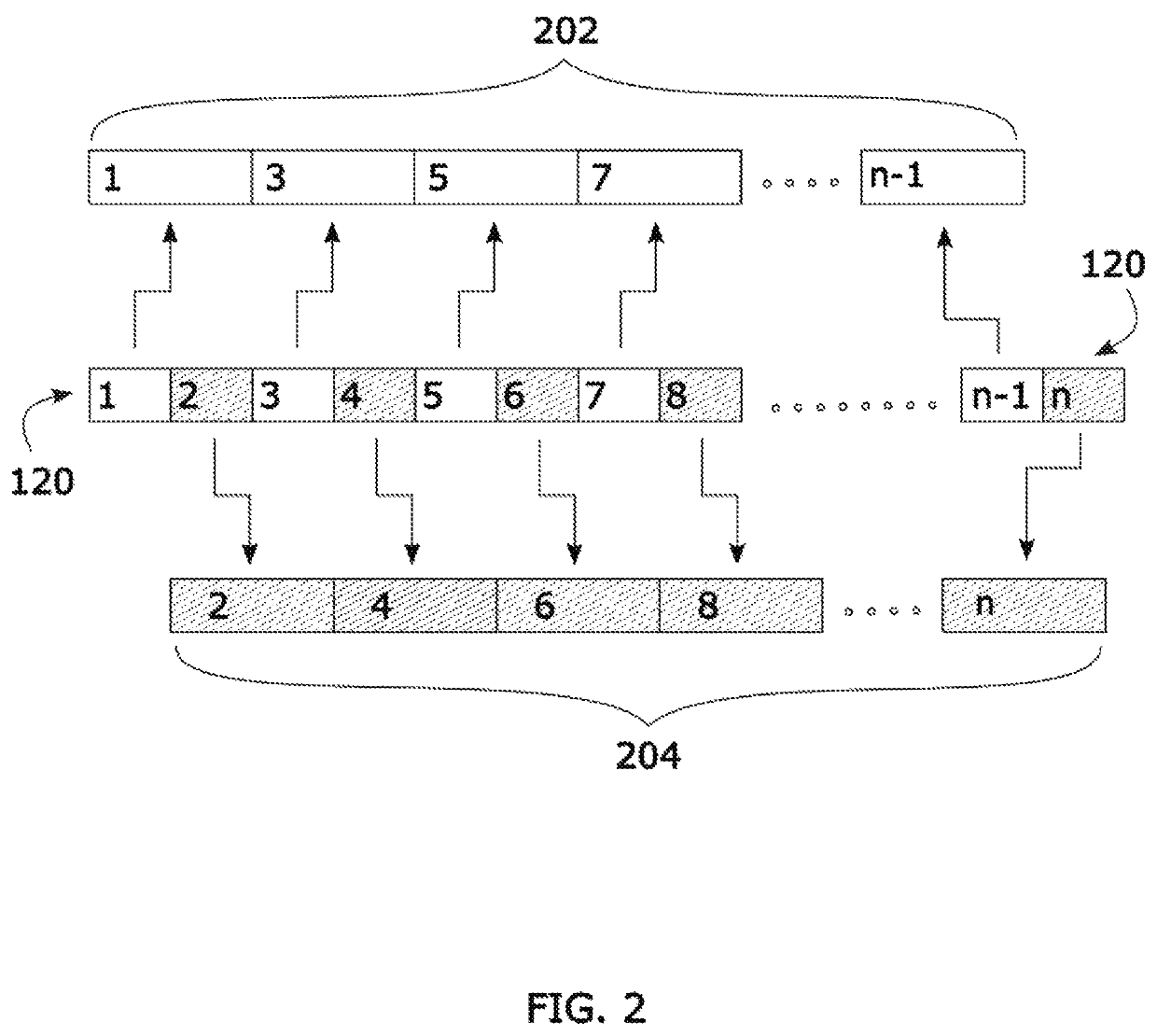System and method for recording, as a single cinematic sequence of frames, images of a scene illuminated with two different lighting schemes by timing alternate actuation of the lighting schemes within pairs of adjacent frames to minimize visual motion artifacts between images captured therein
a technology of lighting schemes and sequences, applied in the field of illumination and recording of scenes using multiple lighting sources, can solve the problems of inability to film a motion picture scene with more than one lighting setup, complex optical flow algorithms may be required to remove motion artifacts, and expensive equipment may increase the cost of filming. , to achieve the effect of creative or technical flexibility and efficiency
- Summary
- Abstract
- Description
- Claims
- Application Information
AI Technical Summary
Benefits of technology
Problems solved by technology
Method used
Image
Examples
Embodiment Construction
[0050]With reference to FIG. 1A, a schematic diagram of a top view of a scene lit with four light sources is shown of an apparatus for recording a scene using multiple lighting setups 100. The apparatus for recording a scene using multiple lighting setups 100 includes a controller 102 in communication with a camera 106 configured to record a scene 104. The controller 102 is also in communication with lighting equipment consisting of: a light source 108, a light source 110, a light source 112, and a light source 114. The lighting is divided into two lighting setups: a first lighting setup 116, and a second lighting setup 118. A light source can be a strobe light, one or more LEDs, or other light source that can be switched on and off relatively rapidly.
[0051]Flash duration of a light source is commonly described by two numbers that are expressed in fractions of a second:[0052]t.1 is the length of time the light intensity is above 0.1 (10%) of the peak intensity[0053]t.5 is the length...
PUM
 Login to View More
Login to View More Abstract
Description
Claims
Application Information
 Login to View More
Login to View More - R&D
- Intellectual Property
- Life Sciences
- Materials
- Tech Scout
- Unparalleled Data Quality
- Higher Quality Content
- 60% Fewer Hallucinations
Browse by: Latest US Patents, China's latest patents, Technical Efficacy Thesaurus, Application Domain, Technology Topic, Popular Technical Reports.
© 2025 PatSnap. All rights reserved.Legal|Privacy policy|Modern Slavery Act Transparency Statement|Sitemap|About US| Contact US: help@patsnap.com



